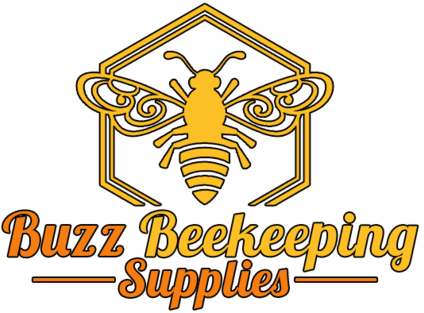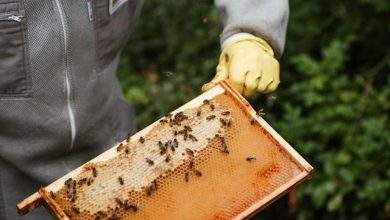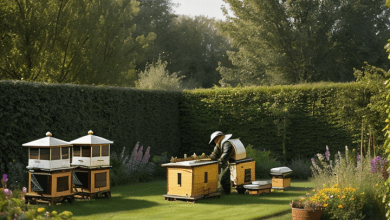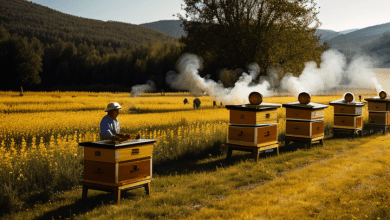Beekeeping Supplies Alabama
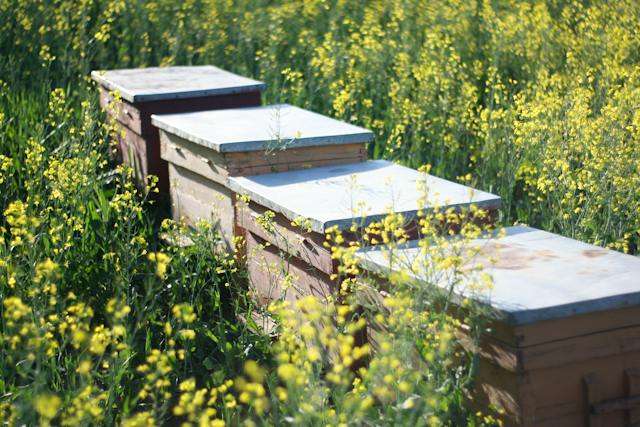
In the heart of the South, Alabama boasts a rich history of beekeeping, and the industry continues to thrive. As bee populations face threats from habitat loss, pesticide use, and climate change, the role of beekeeping supplies in sustaining and supporting these essential pollinators is more crucial than ever.
In this article, we will explore the importance of beekeeping supplies in Alabama, the essential equipment needed for beekeeping, the local businesses that supply these goods, sustainable beekeeping practices, and the future of the industry.
No matter where you are looking for beekeeping supplies in Alabama, we’ve got you covered.
Beekeeping in Alabama
- Alabama’s rich flora provides an abundance of nectar sources, resulting in exceptional honey production.
- Beekeepers can harvest unique varieties of honey, each with distinct flavors and medicinal properties.
- Alabama ranks 32nd in the United States in honey production, with an annual yield of 400,000 pounds.
Beekeeping Equipment
Beekeeping is a highly rewarding and important activity that requires specific equipment to ensure the well-being of honeybee colonies. Before starting your beekeeping journey, it’s important to have a good understanding of the necessary bee supplies.
Beehive Components
Beehive components are essential to the success of beekeeping. Each part plays a crucial role in creating a comfortable and productive environment for honeybees.
- Hive Boxes: Hive boxes, also known as supers, are among the most important components of a beehive. They serve as the living quarters for honeybees and their honeycombs. There are different styles of hive boxes available, such as Langstroth, top bar, and Warre hives, each offering unique advantages and suiting different beekeeper preferences and bee needs.
- Frames: Frames, which are suspended within each hive box, provide structural support for honeycombs. They serve as a foundation for brood rearing and honey storage. Properly assembled frames are essential for the organization of the bee colony and the effective management of beekeeping.
- Bottom Boards: Bottom boards act as the base of the beehive, offering stability and ventilation while providing an entrance for honeybees to come and go freely. They also play a crucial role in defending the colony against intruders.
- Inner Covers and Outer Covers: Completing the structural integrity of the hive, inner covers and outer covers provide insulation and protection for honeybees. Inner covers add an extra layer of insulation, while outer covers safeguard the hive from harsh weather conditions like rain, snow, and wind.
Having high-quality hive boxes, frames, bottom boards, inner covers, and outer covers is essential for successful hive management. It is crucial to accommodate various stages of bee colony growth and maintain the comfort and productivity of honeybees.
In conclusion, understanding the components of a beehive is crucial for any aspiring beekeeper. By investing in the right equipment and understanding their functions, beekeepers can create a comfortable and thriving environment for their honeybee colonies.
Protective Gear for Beekeepers
Beekeeping is a rewarding and fulfilling endeavor, but it comes with its fair share of risks, especially when it comes to bee stings. It is crucial for beekeepers to invest in high-quality protective clothing to ensure their safety and comfort during beekeeping activities. In this comprehensive guide, we will explore the various types of protective gear available to beekeepers, providing valuable insights to help them make informed decisions and elevate their beekeeping journey.
Bee Suit: The bee suit is an indispensable piece of protective clothing that offers crucial defense against bee stings and provides comprehensive coverage during beekeeping tasks. There are two primary types of bee suits to consider:
- Canvas Beekeeping Suits: Known for their durability and outstanding resistance to bee stings, canvas beekeeping suits provide robust protection for beekeepers.
- Ventilated Bee Suits: Crafted with up to three layers of breathable mesh fabric, ventilated bee suits allow beekeepers to work comfortably in hot weather conditions while ensuring steadfast protection from bee stings.
Bee Gloves: Selecting the appropriate pair of beekeeping gloves is essential for safeguarding hands against stings while maintaining dexterity. The two primary options include:
- Goatskin Bee Gloves: Celebrated for their exceptional tactile sensitivity, goatskin bee gloves empower beekeepers to handle delicate tasks with ease while shielding against stings.
- Cowhide Bee Gloves: With their thick leather construction, cowhide bee gloves provide robust protection, ensuring beekeepers’ hands remain safe throughout beekeeping activities.
Beekeeping Boots: Engineered to prevent bee access to the feet, beekeeping boots are an essential addition to beekeeping supplies, ensuring that feet remain safeguarded during honey bee colony tending.
Veil: A dependable beekeeping veil, meticulously crafted from fine mesh, plays a critical role in shielding the face and neck from bee stings, offering optimal visibility while preventing bee contact with the skin.
Purchasing Options and Considerations
In many instances, beekeepers can procure a combo pack consisting of a bee suit and bee gloves at a discounted price, providing a convenient and cost-effective solution for acquiring essential protective clothing for beekeeping.
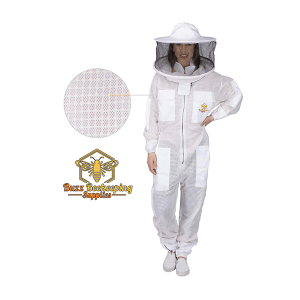
Protective gear is an essential component of successful and safe beekeeping. Understanding the various types of protective clothing available and investing in high-quality gear is crucial for beekeepers to ensure their safety and comfort during beekeeping activities.
Beekeeping Tools
Beekeeping in Alabama requires the use of various tools to effectively manage hives. Investing in the right beekeeping tools is crucial for ensuring the safety and well-being of honeybees, as well as the smooth operation of a beekeeping business.
Bee Smoker: A bee smoker is an indispensable tool for calming honeybees during hive inspections. Emitting cool smoke that masks the alarm pheromones released by guard bees, the smoker pacifies the colony and reduces the risk of stings. Every beekeeper in Alabama should have a hive smoker and extra fuel on hand for effective hive management.
Hive Tool: The hive tool is an invaluable instrument for separating and prying apart hive components during inspections. Its flat blade and curved hook design allows beekeepers to lift frames, scrape off excess propolis, and remove burr comb, all while efficiently dismantling and reassembling hives without harming the bees or equipment.
Bee Brush: Designed to protect the bees, the bee brush allows beekeepers to gently move bees away from specific areas during inspections without causing harm or stress. This tool helps keep the bees calm and prevents injuries, fostering a harmonious interaction between beekeepers and honeybees.
Queen Marking Tools: Queen marking tools are essential for identifying and tracking the queen bee within a colony. They consist of small colored markers that provide vital information about the queen’s age and year, enabling beekeepers to locate and monitor her during hive inspections, ensuring the health and longevity of the colonies.
Having the right beekeeping tools is indispensable for successful hive management in Alabama. Each of these tools serves a specific purpose, contributing to the well-being of the bees and enhancing the smooth operation of a beekeeping business.
Hive Feeders:
Hive feeders are essential tools that empower beekeepers to offer vital nourishment to their bees. These feeders are specifically designed to hold various types of supplemental food, such as sugar syrup or pollen substitute, that can be readily consumed by the bees. By providing an accessible and controlled source of nutrition, hive feeders are instrumental in ensuring that bee colonies have the energy necessary to thrive, produce honey, and expand their population.
Types of Hive Feeders:
- Entrance Feeders: Among the various types of hive feeders, entrance feeders stand as a popular choice among beekeepers. Positioned near the hive entrance, these feeders grant easy access to supplemental food for the bees. Typically, they consist of a small container or tray with small holes or slots to prevent drowning while allowing the bees to feed. Known for their simplicity of use and monitoring, entrance feeders cater to beekeepers of all experience levels.
- Boardman Feeders: Another commonly utilized hive feeder is the Boardman feeder, particularly favored by novice beekeepers. Similar to entrance feeders, they are placed at the hive entrance and feature a small plastic or glass jar with tiny holes or slits on the lid, facilitating easy access for the bees. Boardman feeders are often used with commercially available sugar water mixes and can hold larger volumes of food compared to entrance feeders.
- Top Feeders: In contrast to entrance and Boardman feeders, top feeders are positioned directly on top of the hive, just below the outer cover. With their larger capacity, top feeders can hold significant amounts of food, making them suitable for feeding larger colonies or when substantial supplemental food is required. Equipped with floats or caps to prevent drowning, this type of feeder allows beekeepers to provide ample food without frequent disturbances to the hive.
- Division Board Feeders: Division board feeders are typically positioned inside the hive, replacing one or more frames in the brood nest area, ensuring easy access and minimal disruption to the hive’s organization. These feeders can hold liquid feed, such as sugar syrup or pollen substitute, serving as an efficient means of nourishing the bees. They prove particularly useful during unfavorable weather conditions, such as cold or rainy periods, as they reduce bees’ exposure to external elements while ensuring their nutritional needs are met.
Hive feeders play a vital role in maintaining and promoting the well-being of bee colonies. By understanding the different types of hive feeders and their functions, beekeepers can effectively support their bees’ nutritional requirements, contributing to the overall health and productivity of the hives.
Feeding Bees: Enhancing Honeybee Nutrition for Health and Productivity
Honeybees rely primarily on honey as their main source of nourishment. However, there are instances when supplementary feeding becomes necessary to support the vitality and efficiency of the bees.
Sugar Syrup: Sugar syrup is a popular option for providing additional sustenance to honeybees. It is a convenient choice for beekeepers due to its ease of preparation. Here are some essential considerations when using sugar syrup:
- Ease of Preparation: Creating sugar syrup is a straightforward process that involves dissolving granulated sugar in water.
- Proper Ratios: During spring and summer, a common ratio is 1 part granulated sugar to 1 part water. In the fall, a ratio of 2 parts sugar to 1 part water is recommended for optimal nourishment.
- Priority on Safety: It is critical to exclusively use granulated white sugar when preparing sugar syrup. Other sweeteners, honey, or brown sugar should be avoided.
Protein Patties: Another alternative for boosting the protein intake of bees is through protein patties. These patties typically contain soy flour, brewer’s yeast, and essential nutrients, and can be placed directly in the hive during periods of restricted natural protein sources.
Pollen Substitute: When natural pollen availability is restricted, beekeepers have the option of utilizing pollen substitutes to meet the dietary needs of the bees. Here is a video of a DIY pollen feeder.
- Commercial Options: Commercially available pollen substitutes are easily obtainable and can be mixed with water to form a patty-like consistency, offering an alternative source of nutrition for the bees.
- Natural Pollen Preference: While substitutes can be beneficial, natural pollen obtained from a diverse range of flowers remains the preferred option for honeybee nutrition.
Supplements for Bee Health: Similar to humans, bees also benefit from mineral and vitamin supplementation. Commercially available mineral mixes or homemade solutions containing vitamins such as B vitamins and vitamin C can be incorporated into sugar syrup or sprinkled directly onto the hive frames.
Providing honeybees with a balanced diet is essential for their overall well-being and productivity. While honey is their primary source of nutrition, additional feeding through sugar syrup and pollen substitutes can be advantageous in ensuring their optimal health.
Pest Control Products for Beekeepers
Beekeepers play a crucial role in maintaining the health and productivity of honeybee colonies. One of the key aspects of beekeeping is the effective management of pests and diseases that pose a threat to bee colonies.
Varroa Mite Treatments: Varroa mites are a significant threat to honeybee colonies, as they feed on adult bees and their developing brood. It is imperative for beekeepers to prioritize Varroa mite control to maintain colony health and prevent demise.
- Chemical Treatments for Varroa Mites: Chemical treatments like formic acid or oxalic acid are commonly used to control Varroa mite infestations. When used according to the manufacturer’s instructions, these substances effectively reduce Varroa mite populations in bee hives and minimize their impact on honeybee colonies.
- Organic Alternatives for Varroa Mite Control: For beekeepers who prefer natural alternatives, organic treatments for Varroa mite control are available. Thermal treatments, thymol-based products, and essential oils have shown effectiveness in managing Varroa mite infestations. These options offer an environmentally friendly approach to pest control while delivering positive results.
Wax Moth Control: Wax moths can cause substantial damage to honeybee hives by infesting them and feeding on beeswax comb. Proactive management of wax moth populations is crucial to prevent harm to bee colonies.
- Chemical treatments such as paradichlorobenzene or freezing frames are commonly used to control wax moth infestations in beehives. These methods effectively target and eliminate wax moth populations, reducing the risk of damage to beeswax comb and maintaining overall colony health.
- Hive Inspections for Wax Moth Prevention: Regular hive inspections serve as a key preventive measure for managing wax moth infestations. Active monitoring of bee hives and early identification of potential signs of wax moth activity allow beekeepers to take swift action to address and prevent infestations before they escalate.
Combatting Hive Beetles: Hive beetles can infest beehives, causing damage to the brood, honey, and overall colony health. Here are some of the methods used to combat this pest:
Hive Beetle Traps: Various trap designs are available, such as oil-based traps, screen-type traps, or natural traps utilizing diatomaceous earth.
Thermal Treatments: Thermal treatments have proven to be an effective method in controlling hive beetles. By subjecting the infested hive to controlled temperatures, usually between 102°F to 105°F (38.9°C to 40.6°C), the beetles and their larvae can be effectively eliminated, without harming the bees.
As responsible beekeepers, prioritizing pest control and disease management is essential to protect the health and productivity of honeybee colonies. Varroa mite treatments, wax moth control, and hive beetle control are critical components of effective pest control in beekeeping and should be integral parts of every beekeeper’s toolkit.
Extraction and Processing Equipment for Efficient Honey Harvesting
Efficient honey harvesting is a crucial aspect of beekeeping, and having the right extraction equipment is essential for beekeepers to achieve this. The proper extraction equipment not only ensures the quality of the harvested honey but also contributes to the overall success of beekeeping operations.
- Honey Extractors: The Key to Successful Harvesting – Honey extractors are specialized equipment designed to remove honey from honeycomb frames without causing any damage. They operate using centrifugal force to spin the frames, effectively separating honey from the comb. The choice between manual and electric models depends on individual preferences and specific harvesting needs. The centrifugal force applied in honey extractors is instrumental in extracting honey efficiently. This process ensures that the honey is extracted without compromising the integrity of the honeycomb frames.
- Uncapping Tools: Essential for Preparing Frames – Uncapping tools, such as uncapping knives, electric uncapping knives, and uncapping forks, are indispensable for removing wax caps from cells prior to placing frames in the honey extractor. These tools are crucial for facilitating an efficient and effective honey extraction process.
- Honey Filters: Ensuring Purity and Clarity – Honey filters, also known as honey strainers or sieves, are crucial for ensuring high-quality honey by removing impurities and debris. Equipped with fine mesh screens, these filters effectively trap unwanted particles while allowing the pure honey to pass through.
- Honey Buckets: Ideal Storage Solution – Food-grade buckets are the ideal storage solution for extracted and filtered honey, meeting strict food safety standards. These buckets are designed with food-safe materials and airtight lids, ensuring the freshness and purity of the stored honey.
- Wax Melters: Maximizing Resources – Wax melters play a crucial role in efficiently extracting and purifying beeswax, helping beekeepers maximize resources and minimize waste. This equipment contributes to the overall success of beekeeping operations.
- Bottling Supplies: The Finishing Touch – Beekeepers need to utilize jars, lids, labels, and honey dispensers to ensure the proper storage and presentation of honey, adding the finishing touch to the honey harvesting process.
Utilizing proper extraction equipment is crucial for beekeepers to achieve an efficient and effective honey harvesting process. Honey extractors, uncapping tools, honey filters, honey buckets, wax melters, and bottling supplies all play vital roles in maintaining high-quality honey and minimizing waste. By using the right equipment, beekeepers can ensure the success of their honey extraction and storage, ultimately contributing to the overall success of their beekeeping operation.
Advanced Beekeeping Equipment
Beekeeping is a delicate and intricate practice that requires the use of advanced equipment to ensure the health and productivity of bee colonies. The utilization of advanced tools has proven to be crucial for managing various aspects of beekeeping, from maintaining the queen’s movements to safeguarding the quality of harvested honey.
- Queen Excluder: Managing the Movements of the Queen – The queen excluder is a vital tool for beekeepers, serving as a strategic barrier to control the movements of the queen within the hive. By separating the brood chamber from honey supers, it allows worker bees unrestricted movement while preventing the queen from entering restricted zones. This facilitates honey extraction and contributes to maintaining a hygienic environment within the hive.
- Queen Rearing Supplies: Queen rearing is essential for the thriving of bee colonies, and advanced beekeeping equipment includes specialized supplies to support this process. These supplies, such as queen cups, protective cell covers, and precision grafting tools, are crucial for nurturing replacement queens and facilitating the growth of the colony.
- Honey Refractometer: Ensuring Quality Honey – The honey refractometer is a valuable device for beekeepers, as it accurately measures the moisture content of harvested honey. By ensuring optimal moisture levels, this tool safeguards the quality and longevity of honey, protecting against fermentation and spoilage.
- Bee Vacuum: The bee vacuum offers beekeepers a humane and efficient solution for relocating or removing bee colonies. Unlike traditional methods that may harm bees, the bee vacuum gently gathers and transports bees, minimizing potential harm to these delicate insects. Additionally, bee vacuums can aid in pollination efforts by facilitating the transfer of bees to specific areas for enhanced pollination potential.
- Hive Monitoring Devices: Advanced beekeeping equipment includes hive monitoring devices equipped with sensors and probes that offer valuable insights into colony conditions. These devices provide essential data on parameters like hive temperature and humidity levels, empowering beekeepers to make informed decisions and prioritize the health and productivity of their bees.
Advanced beekeeping equipment is essential for beekeepers to prioritize the health and productivity of their hives. From managing the queen’s movements to supporting queen rearing and maintaining the quality of harvested honey, advanced beekeeping equipment has revolutionized beekeeping practices through efficiency and data-driven insights.
Where to Buy Bees in Alabama
Interested in purchasing bees and nucleus hives (nucs) in Alabama? Look no further. Here are some of the top places to buy queen bees, packaged bees, and nucs in the state.
- Bee Clubs: Local bee clubs are a great way to connect with reputable suppliers of queen bees, packaged bees, and nucs. These trusted sources ensure the quality and health of the bees you purchase.
- Local Breeders: Another option for purchasing bees in Alabama is to buy directly from local breeders. This allows you to inspect the bees and their living conditions before making a purchase, ensuring that you get healthy bees.
- Online Sources: For those unable to find bees locally, online suppliers offer the convenience of purchasing bees from the comfort of your home. However, it is crucial to research and choose a reliable supplier to ensure the quality of the bees you receive.
- Farm Supply Stores: Farm supply stores are also a viable option for sourcing beekeeping supplies in Alabama. These stores typically carry a range of agricultural and livestock-related products, including beekeeping equipment.
- Beekeeping Conferences and Events: Beekeeping conferences and events often feature bee suppliers, making them another avenue for purchasing bees and nucs. These events also provide opportunities to learn from experts in the field, making it a great option for both purchasing and learning about beekeeping.
It’s important to do thorough research and choose a reliable source to ensure the health and quality of the bees.
=====
Benefits of Engaging with Beekeeping Clubs
Joining a beekeeping club can provide valuable resources, guidance, and support for new beekeepers. Experienced individuals within the club can share their knowledge and expertise, ultimately enhancing your skills and overall experience as a beekeeper.
State Association
The state association is the Alabama Beekeepers Association.
Here is a List of Local Beekeeping Clubs in Alabama:
- Baldwin County Beekeepers Association
- Bibb County Beekeepers Association
- Blount County Beekeepers Association
- Central Alabama Beekeepers Association
- Central St. Clair County Beekeepers Association
- Chilton County Beekeepers Association
- Cullman Beekeepers Association
- East Alabama Beekeepers
- Etowah County Beekeepers Association
- Jackson County Beekeepers Association
- Jefferson County Beekeepers Association
- Limestone County Beekeepers Association
- Lower Alabama Beekeepers Association
- Madison County Beekeepers Association
- Mobile County Beekeepers Association
- Northeast Alabama Beekeeper’s Association
- Northwest Alabama Beekeepers Association
- Perry County Beekeepers Association
- Sand Mountain Beekeepers Association
- Saugahatchee Beekeepers Association
- Shelby County Beekeepers Association
- Shoal Area Beekeepers Association
- South Alabama Beekeepers Association
- Southwest Beekeepers Association
- St. Clair Beekeepers Association
- Tennessee Valley Beekeeping Association
- Tri County Beekeepers Association
- Walker County Beekeepers Association
- West Alabama Beekeepers Association
- Wiregrass Beekeepers Association
Conclusion
Beekeeping supplies in Alabama are essential for the success of beekeepers at all levels. By understanding the specific needs of their apiary, utilizing essential equipment and resources, and considering the local environment, beekeepers can ensure the health and productivity of their bees, as well as their own success and satisfaction in this rewarding pursuit.
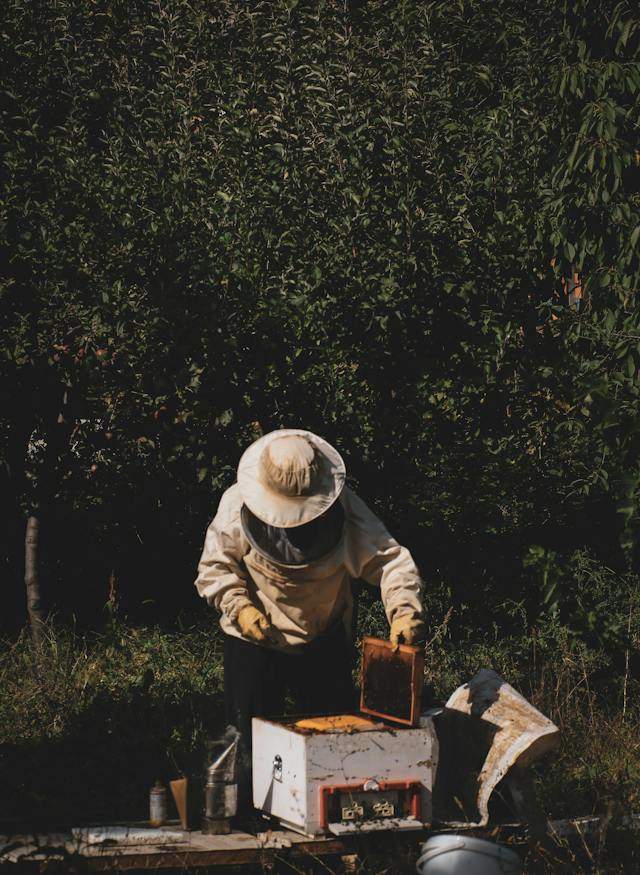
FAQ’s:
Why is it important to use quality beekeeping supplies?
- Using high-quality beekeeping supplies is crucial for ensuring the health and productivity of your beehives. They provide a safe environment for the bees, help prevent diseases and pests, and facilitate effective management of the colonies, enabling you to optimize honey production.
Where can I find reliable Beekeeping Supplies in Alabama?
- There are numerous places to find bee supplies in Alabama. You can check out local beekeeping supply stores, agricultural supply centers, or even online platforms dedicated to beekeeping equipment. It’s important to choose reliable sources that offer high-quality products to ensure the success of your beekeeping venture.
How do hive feeders contribute to the health of bee colonies?
- Hive feeders ensure that bees have access to supplemental food, promoting their well-being and productivity.
Can I purchase a combination of bee suit and bee gloves?
- Yes, many suppliers offer combo packs at discounted prices, providing a convenient solution for acquiring necessary protective clothing.
How should I choose beekeeping protective clothing?
- When selecting beekeeping protective clothing, prioritize safety and comfort. Look for a full-body suit or jacket made of durable, lightweight fabric that provides ample protection against bee stings. Ensure that the clothing has a veil or hood that securely covers your face and neck, as those are particularly sensitive areas. Additionally, gloves, beekeeping boots, and a hat can further enhance your protection.
What are the essential components of beekeeping protective gear?
- Essential components include bee suits, bee gloves, beekeeping boots, and veils, all aimed at protecting different parts of the body during beekeeping tasks.
How does protective gear elevate a beekeeper’s journey?
- Investing in high-quality protective gear ensures safety and comfort, allowing beekeepers to focus on their tasks and make informed decisions for successful beekeeping.
What should I look for in a beekeeping supplier?
- When you are looking for the best beekeeping supplies in Beekeeping Supplies Alabama, it is important to keep a few things in mind. First of all, you want to make sure that the beekeeping supplies you purchase are of the highest quality. It is also important to make sure that you are buying supplies from a reputable beekeeping supplier.
